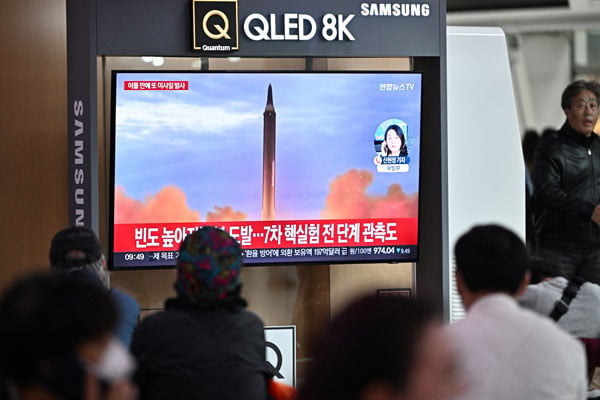North Korean crisis around the corner

Author: Daniel Russel. PHOTO/FILE/COURTESY
What you need to know:
- It is unclear whether Kim or his predecessors were ever serious about denuclearisation.
A new geopolitical crisis is stirring against the backdrop of the war in Ukraine, tensions around Taiwan, and the sharpening US-China rivalry. North Korea, after a three-year pause in nuclear provocations, is gearing up for what intelligence agencies warn could be a seventh nuclear test.
Five years ago, the world faced the prospect of “fire and fury” as North Korean dictator Kim Jong-un and then-US president Donald Trump traded threats of nuclear war. A phony peace followed, as Kim met with several world leaders to gain sanctions relief in exchange for vague promises to scale back parts of his nuclear programme.
After his failed Hanoi summit with Trump in 2019, Kim returned to Pyongyang and soon ordered a national lockdown in a futile effort to escape the Covid-19 pandemic. But North Korea’s nuclear-weapons and missile programmes continued to advance rapidly.
Kim had signalled his intention to expand the North’s nuclear capabilities when he began his diplomatic outreach in early 2018, and he has been good to his word. Kim’s arsenal is now estimated to include about 50 nuclear weapons. Moreover, in 2020, shortly after test-firing a new type of submarine-launched ballistic missile, Kim unveiled a massive new long-range missile at a night-time military parade meant to showcase the regime’s formidable weaponry. The following year, the International Atomic Energy Agency reported that North Korea had restarted its plutonium-enrichment operations. Soon after, it test-fired long-range cruise missiles and a new nuclear-capable hypersonic missile.
So far this year, North Korea has launched more than 40 ballistic missiles in violation of the UN Security Council’s resolutions. Kim’s determination to use his nuclear arsenal to intimidate his enemies, together with the changing geopolitical landscape as a result of the war in Ukraine, increases the likelihood that North Korea will reprise its “fire and fury” posturing. The threat to the region’s stability and to global security is serious.
It is unclear whether Kim or his predecessors – his father, Kim Jong-il, and his grandfather, Kim Il-sung, the regime’s founder – were ever serious about denuclearisation. Nevertheless, for decades, the US and other governments have tried in vain to nudge North Korea to give up its nuclear weapons programme through a combination of pressure, security assurances, and economic inducements.
Kim’s behaviour reflects his unwavering determination to be accepted – however reluctantly – as the leader of a nuclear power, akin to how the international community has come to accept Pakistan or even India. But he has abandoned North Korea’s previous “action-for-action” approach – the step-by-step bartering of sanctions relief for limitations on his nuclear activities. As a result, he has not even acknowledged the Biden administration’s repeated efforts to resume denuclearisation talks.
Instead, Kim demands that the US withdraw its forces from South Korea and remove strategic assets from the region – clearly a non-starter. Kim will also likely seek to exploit America’s diplomatic ructions with Russia and China. The Kims’ regime long ago mastered the art of using disagreements between the major powers to their advantage.
But the rapid deterioration of relations between the US and Russia, and between the US and China, have changed the game. The strategic alliance between Chinese president Xi Jinping and Russian president Vladimir Putin has assured that neither would align with the West to discipline Kim. Xi and Putin are currently courting the West’s adversaries, not seeking to punish them. And while his patrons block any action against North Korea in the UN Security Council, Kim can pursue his nuclear ambitions unimpeded.
Daniel Russel is a former US assistant secretary of state for East Asian and Pacific affairs
-- Project Syndicate




